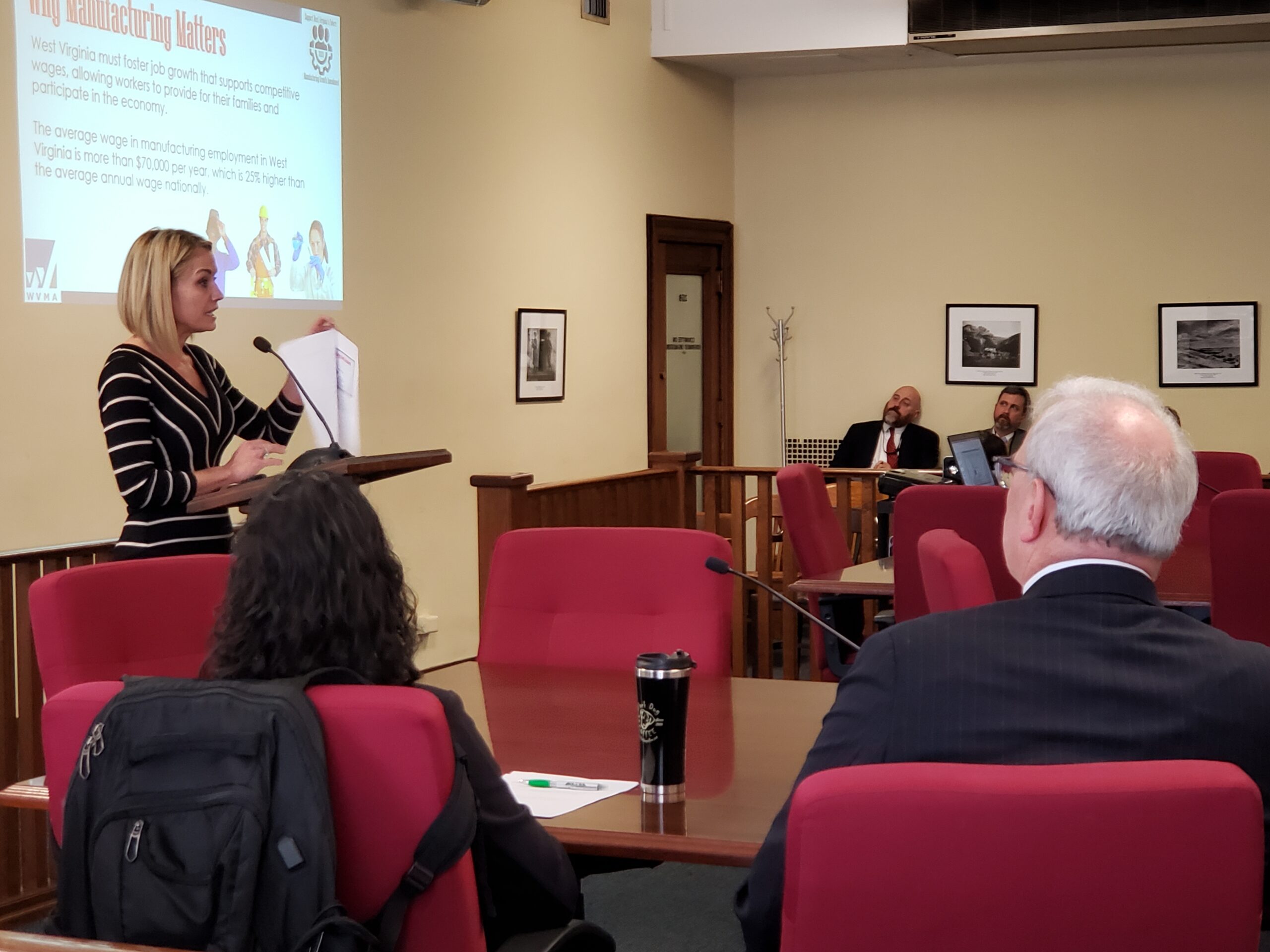CHARLESTON — One day before the beginning of the 2020 session, legislators got a look at a proposed constitutional amendment to eliminate the personal property tax on manufacturing inventory, machinery and equipment.
Rebecca McPhail, president of the West Virginia Manufacturers Association, gave an overview on Tuesday of the Manufacturing Growth Amendment to members of two interim economic development committees.
West Virginia is one of only two states, along with Arkansas, that levies the full tax, she said. Most other states have no tax at all, while 12 levy the tax but offer exemptions, credits, abatements or other measures to ease the burden.
It’s been said that, according to the Tax Foundation, West Virginia has the 19th-best business tax climate in the nation – better than all its adjoining neighbors.
But, McPhail said, Tax Foundation figures also show that West Virginia’s total effective tax rate on manufacturing in 43rd worst in the nation, at 15.9% – the highest in the region.
Among our adjoining states, the rates are: Pennsylvania, 4.2%; Ohio, 5.1%; Virginia, 9.3%; Kentucky and Maryland, 10.3%. Our regional competitors North Carolina and Tennessee come in at 8.9% and 11.1%, respectively.
The tax is regressive and inhibits investment – both by outside companies shopping for new sites and for in-state businesses discouraged from re-investing.
“It’s really got to go,” she said. “We are at a clear disadvantage and we need to let the West Virginia voters decide.”
Before getting to the obstacle that has kept this tax cut from becoming a reality for around three decades, McPhail highlighted how manufacturing benefits the state.
Manufacturing accounts for more than 10% of the gross state product, she said, though there are fewer jobs now than a few decades ago. The number of manufacturing jobs has shrunk from 80,000 in the 1990s to 50,000 now. But those 50,000 jobs have an average annual wage of $70,000 plus benefits, and create about 200,000 support jobs.
“These are the types of careers that allow folks to live, work and raise a family in this state,” she said.
The tax generates about $100 million per year and supports county schools, counties and municipalities.
Somewhat in line with what Senate President Mitch Carmichael has envisioned, the Manufacturing Growth Amendment would phase out the tax over four years and rely on natural economic growth, which has averaged about $100 million per year, to help fill in the hole.
The amendment would aim to keep the schools and local governments whole, McPhail said, by requiring the governor to include money for those entities in the budget, while allowing the legislature the flexibility to decide exactly how to come up with the money.
Delegate John Doyle, D-Jefferson, raised a couple concerns – concerns raised often over the years.
Doyle said he’s served 19 years on House Finance, 10 of those years as vice chair. He voted for, and now regrets, approving tax cuts that put a $200 million hole in the state budget.
Based on his experience, he said, eliminating the tax – even with the general precautions included in the amendment – will shift the tax burden to smaller businesses or to individuals. Also, natural growth in the budget is always accompanied by inflation in expenditures.
So if the Legislature eliminates the tax in the Constitution, it needs to replace it in the Constitution, he said. (Changes in tax structure require voter approval of a constitutional amendment, which in return requires two thirds of both the House and the Senate to approve a resolution to put an amendment on the ballot.)
Sen. Ron Stollings, D-Boone, agreed the tax is regressive but also cautioned about making up the lost revenue. He pointed out that state budget cuts led to a $217 million cut to the Department of Health and Human Resources from 2014 through 2017, with accompanying cuts in social services.
“If we don’t have the courage to get another tax base and allow those social programs to be cut, then shame on us,” he said.
McPhail admitted that while state officials and various experts believe the tax cut would enhance manufacturing, no one knows how much. “There’s really no way to know how much we’re missing out one in potential investment.” But the state development office believes it’s significant.
A couple legislators urged McPhail to round up some figures that might enhance her argument and ease fears about lost revenue. Those include some projections of potential growth, no matter how roughly ballpark they are; and some estimates of what a partial repeal – to match the overall manufacturing tax burden of other states in the region – might achieve.
TWITTER @dbeardtdp Email David Beard at dbeard@dominionpost.com




